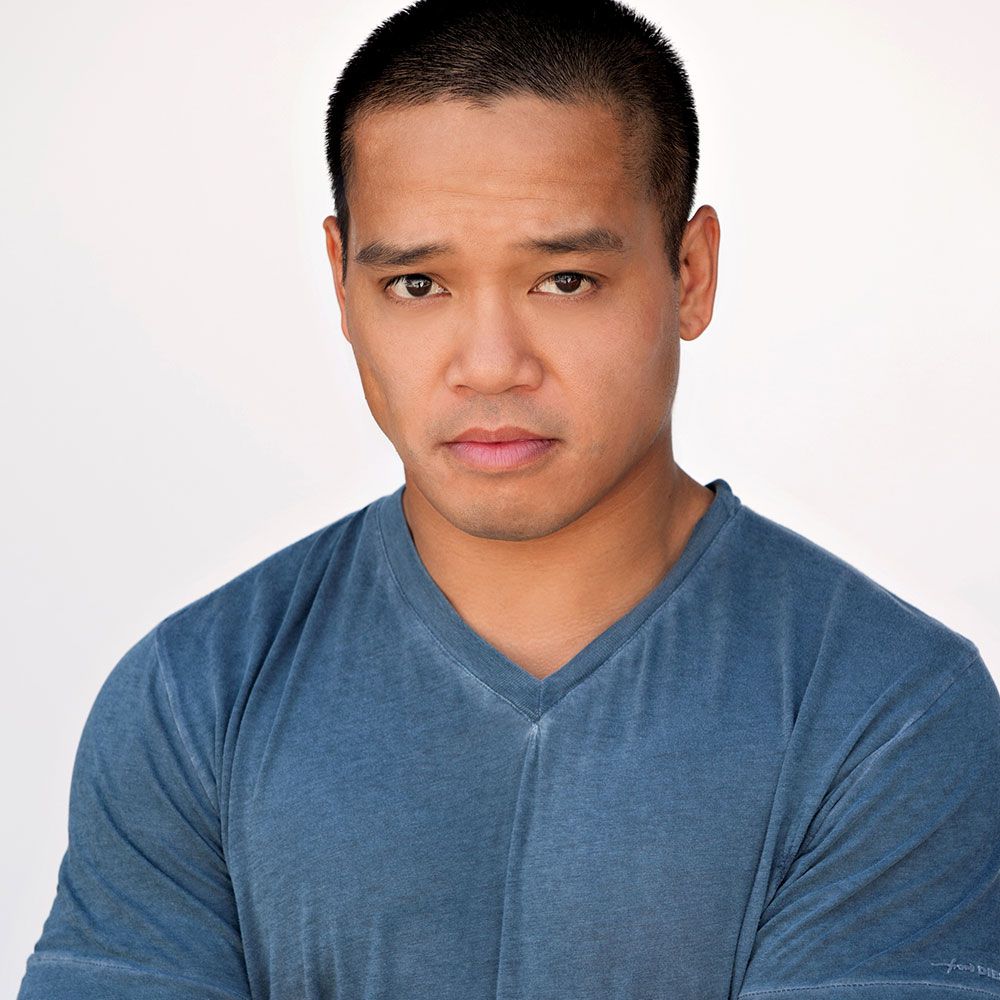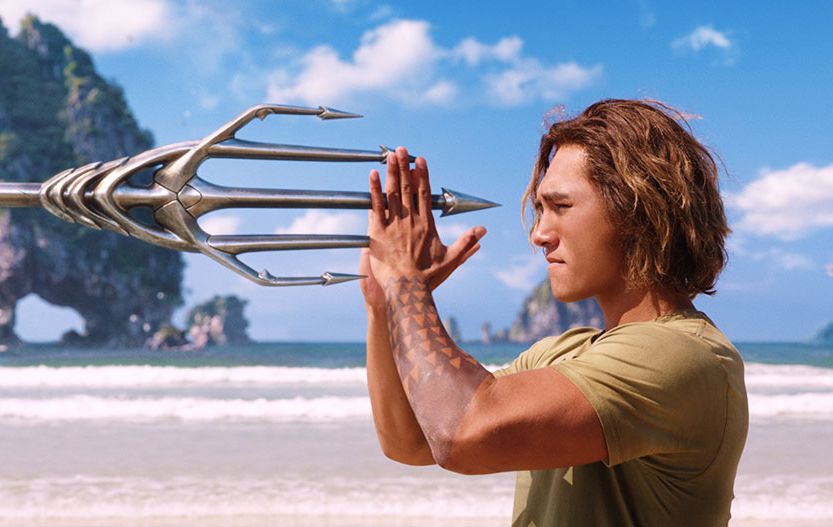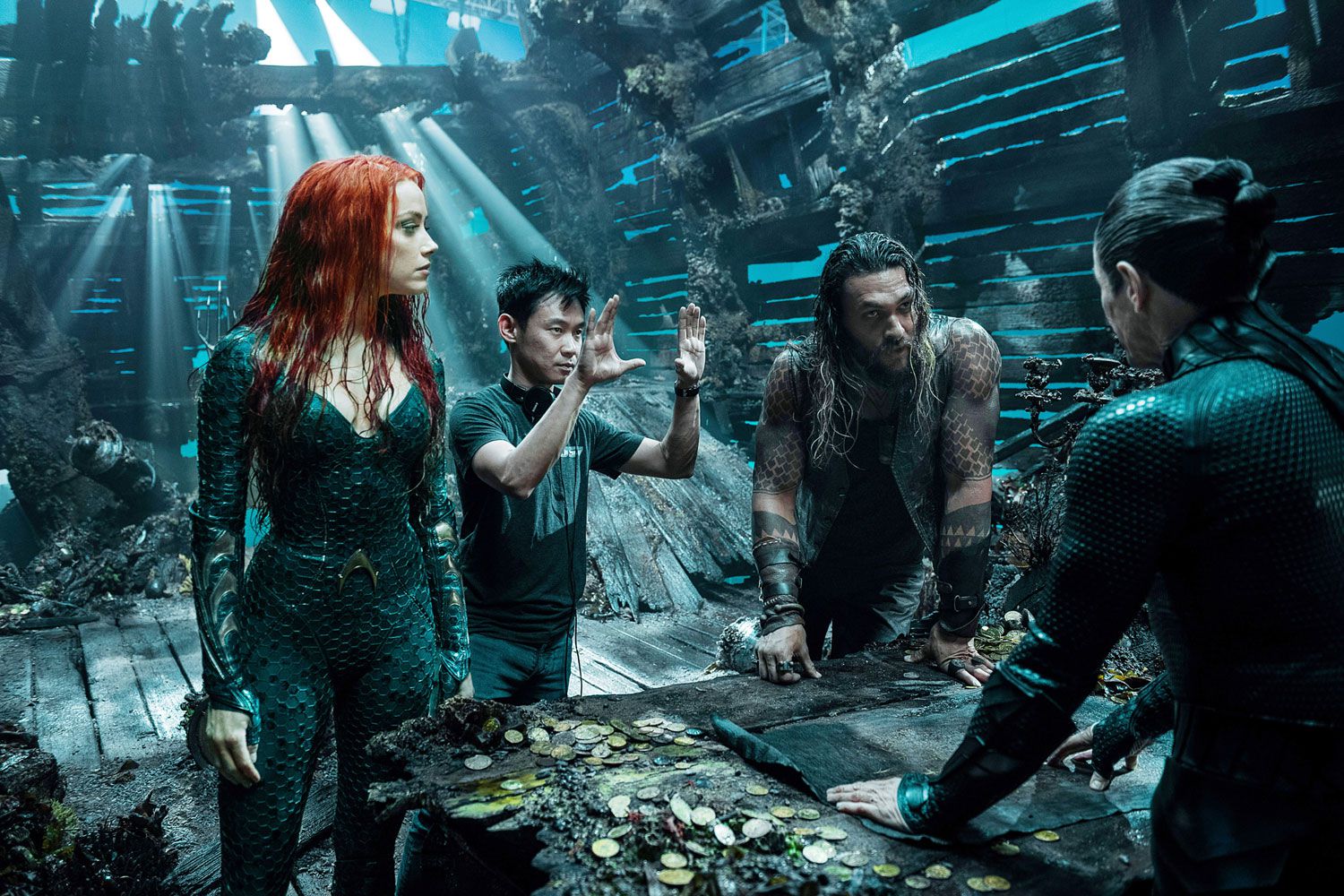You may not know Jon Valera, but you’ve almost certainly watched a Jon Valera fight. The stunt coordinator and his company 87Eleven Action Design have choreographed fight scenes for Deadpool, John Wick, Atomic Blonde, and the freshly released and delightfully ridiculous Aquaman. The latter posed its own set of new challenges for the seasoned stuntman: How do you film a fight scene underwater? How do you get Nicole Kidman action-ready in 30 minutes? Valera spared a few minutes amid rehearsals for the Harley Quinn spinoff movie Birds of Prey to fill us in on how he pulled it all off.
Mild spoilers for fight scenes below.
Was there a scene in Aquaman that was particularly challenging for stunt choreography?
The coliseum fight. There was only one segment of that scene that was done without wires, or without a tuning fork.
Sorry, a tuning fork?
The tuning fork is like a pitchfork. It’s two pipes that have been welded together, it’s like U-shaped, and the actors and stunt doubles would be in harnesses hooked up to the sides of the fork from their hips, so they can swivel. The tuning forks are put on TV news camera stands. So they’d be wheeled around on the blue screen, so you can turn them, sway them, lean forward, lean back. It’s easier for them rather than being suspended in wires, because you can push them in any direction. Normally wires are done if you’re flying, or there’s a big reaction. But it’s always a challenge when you have to fight in wires. It’s not one or two beats. They had to do it for at least several beats. Director James Wan even wanted us to coordinate it where one person is fighting upside down and the other person is right side up.
Okay, so that sounds really challenging.
Yeah, we’d never done that before. It took months of rehearsing. When the actors were training, we weren’t just working on choreography and technique. We had to get them just used to being in the fork. Because any time you’re dealing with harnesses and wires, it’s not the most comfortable feeling.
After all that, and those months of training and coordinating, how long is the scene?
I think that came out right around two minutes. Maybe a little less.
Nicole Kidman has a pretty intense fight scene in the beginning, too.
That one scene with Nicole Kidman in the house at the beginning of the movie, that was one shot. James Wan wanted to make that a true one-shot scene, there were no stitches or blends that put any cuts together. We shot it with the Spidercam, which is a camera on a wire system that’s computerized. So we had to coordinate the fight to the camera’s moves.
So how does someone like Kidman, who is better known for non-action movies, get ready for a fight scene?
She didn’t have much time with us because of her schedule. Like a true professional, she came in and trained to the specific choreography right away. That’s what we do a lot of the time with the A-list actors. They’ve got so many things on their plate, and we only get them for 20 or 30 minutes. We’re not the only department that gets to them.
So she comes in and trains with me and the guys and it’s “Okay, this is the choreography. We have to teach her this specifically.” As a choreographer, I like to get the actors or the stunt people, generally, for at least a few weeks or a month in advance so I can train them and see what their strengths and weaknesses are and that helps me build the choreography. And if the director wants certain things and the actor’s weak at it, you have the time to build it up for the actor. But this one, no. We knew we were getting Nicole Kidman. We had to choreograph the fight. She had a double to do the flips and everything, but we had to choreograph and get it locked in and approved by James Wan. And once it was approved, that’s all we spent time on with Nicole was that specific choreography.
And she could handle it.
Yeah. It’s hard. The trident is not a normal weapon that everybody walks around with. Even for [star] Jason [Momoa]. He had to train with the staff and the trident for months. I’ve done all kinds of martial-arts weapons and everything, but even for me, I had to train myself on the trident. I had to train the stunt guys. I had to be ahead of the game that way.
How long did you yourself train with the trident before you felt comfortable training the rest of the team on it, and did you consult with any experts on it?
Because of our company 87Eleven Action Design, we have a lot of guys that we train with in the gym in our company that bring a lot of different styles and experience to the table. Past training with the staff came back. You figure out how the tridents lock up, and how they’re going to hit. We had to be cognizant of how the trident works, you have to hit it on the edge like it’s an ax.
How heavy were they?
The hero tridents, they were heavy. Those are the ones that are going to end up behind a glass case. The actual stunt ones were amazing because they were light and you could actually hit against them really hard.
You’re training actors and stunt people in a ton of different styles for a ton of different projects. How do you yourself train? What’s your regimen?
I do a lot of cross-training, with boxing, kickboxing, and judo. Jujutsu. I like to mix it up. I don’t try to stay with one style all the time. The more you open your mind to different styles, it’s going to help you as a choreographer.
Was there a primary style that showed up in Aquaman?
What I did with James Wan, I put together a list or a video reference of a lot of projects that influence me, and their styles. And I’ll lay out character by character—there is Aquaman’s style, this is Mera’s style. Even though they’re using the same weapon, Aquaman [Momoa] and Orm [Patrick Wilson] had to have different styles.
How did the underwater element change the way you choreographed these fight scenes?
We’d have to think: Okay, this is underwater. These guys aren’t going to have the resistance humans would have underwater—they can move like humans can above water. But, of course, if Aquaman gets hit, he’s going to be lifted or floating. He’s not going to the ground. So, I go to sweep my leg and I lift my leg up, it’s going to stay floating. If his feet leave the ground, he’s gonna float. It was tricky, but I had a great wire team in Australia [a shooting location for Aquaman].
How long was the process from the initial blocking to filming?
I was in Australia for eight months for that. I came right off Thor: Ragnorak, came home for a month, then went back to Australia to work on Aquaman.
You’ve coordinated everything from Thor: Ragnorak to Creed II. Is there a signature to a Jon Valera fight scene?
I don’t know if there’s a real signature style. I try to make hybrids. But I value performance. I make sure the performance of not just the actors, but the stunt people is key. I like contact hits. I want to see either the stuntman or the actor take the impact. They have to take the hit. When I did Atomic Blonde with Charlize Theron, I made all the guys put the gloves on and hit Charlize. Not hard. But you’re gonna get hit. You’re gonna get thrown against a wall. You’re gonna get thrown on the ground. You have to train your body to take a little bit of that impact. So part of her training was, “Okay. The guys are going to start tapping you with the gloves so you get used to taking an impact.” And she was all game for it.



